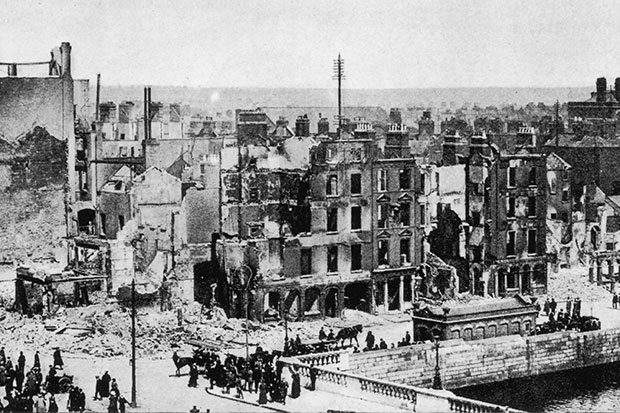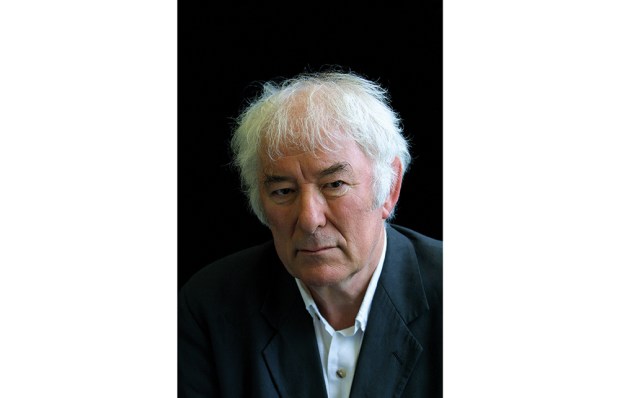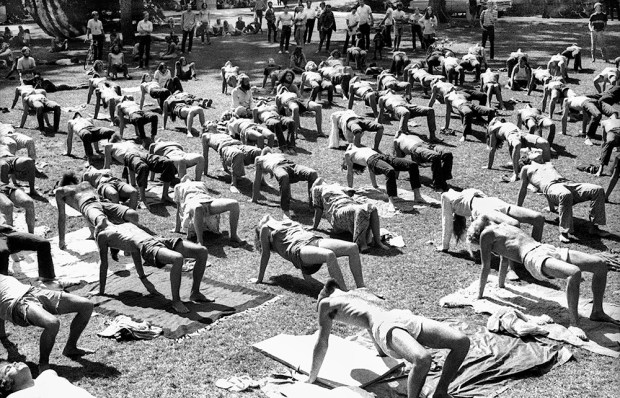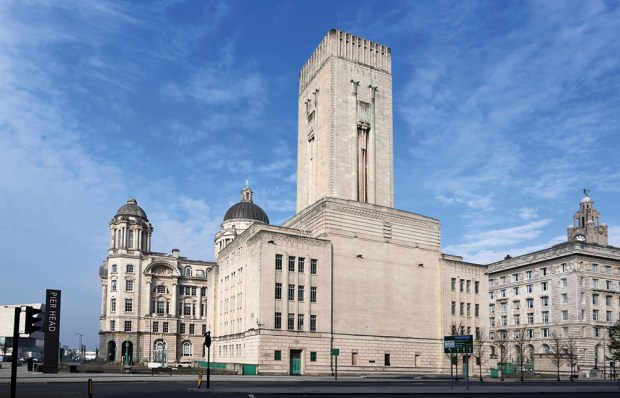As Lytton Strachey remarked of the Victorian era, writing the history of the Irish revolution is inhibited by the fact that we know too much about it. As the centenary of the 1916 Rising approaches, an avalanche of books, articles and television programmes is bearing inexorably down; even the re-enactments have begun, with Dublin’s city centre taken over last Easter Monday by jolly crowds in period dress, celebrating ‘the Road to the Rising’. No one got shot, no buildings were blown up, and no shops were looted, but it was the thought that counted, and everyone had a good time. As Arthur Koestler wrote long ago in a classic article on ‘The Political Libido’, commemoration is all about self-identification, and every US citizen has to feel as personally proud of the War of Independence as if he or she had fought in it.
Though today’s Irish citizens are equally proprietorial about their revolution, its history presents a less clear-cut picture. Popular support for the 1916 rebels was extremely limited at the time, especially among the populace whose sons and brothers were fighting the revolutionaries’ ‘gallant allies’ in France: the planning of the Rising was heavily contingent upon German aid, though this was strategically downplayed afterwards. So was the fate of the constitutional-nationalist Home Rule party, just as much ‘the enemy’ to the revolutionary generation as the Brits, despite the fact that the Home Rulers had got a Home Rule bill passed in 1912–14, and were desperately trying to negotiate around Ulster’s intransigent resistance.
After 1916 the rapid execution of the rebel leaders, and a number of boneheaded decisions by the British government and their military advisers, handed the advantage to the nationalists. Sinn Féin swept the polls at the 1918 election, paving the way for guerrilla warfare and a divisive treaty in 1922, setting up an Irish Free State within the Commonwealth, which later became a Republic. It also copper-fastened the partitioned province of Northern Ireland, which ironically got its own Home Rule and exploited it enthusiastically. Elsewhere the savage civil war that followed the Treaty not only split the revolutionary brotherhood and in certain areas threatened to release inter-communal violence on religious lines; it imposed a traumatic silence on national memory, and remained a subject sedulously avoided in school history curricula for decades. One wonders if its centenary will be much explored in 2023.
Meanwhile, however, we have the Rising and the War of Independence to be getting on with. Bookshops are full of popular pictorial histories and uplifting hagiographies of dead heroes, while the Irish government has appointed a high-level committee to advise on proper forms of commemoration. Quite properly, the public emphasis is to be on inclusiveness and tolerance, with the losers as well as the winner given due consideration; even the poor old Home Rulers may be picked up from the dustheap of history and given a friendly shake. But how professional historians approach the well-worn subject raises some interesting conundrums.
These are approached imaginatively, but from different directions, by Diarmaid Ferriter and Maurice Walsh. Ferriter, the youthful and formidably productive holder of a prestigious chair at University College Dublin, bases his work on intensive archival trawls, notably in recently released records such as the applications for military service pensions; he is interested above all in the sources, what is preserved and what is forgotten, and the oblique shafts of light which they cast on a disputed history. Walsh, a journalist turned academic who has previously written an excellent book on the coverage of the Anglo-Irish war by British journalists, approaches the narrative of that war and its aftermath from a number of angles, stressing not only everyday life amid the upheavals, but also the ways in which Irish experience reflected wider currents of modernity.
Ferriter’s book is constructed in short chapters, and begins where some might end — with the differing interpretations of the revolution that have emerged inside and outside academe, and the way that this has been driven (or inhibited) by the availability of archival material. His title indicates a recurring theme: the perceived dangers of Irish democracy as seen, not only by the ancien régime and the British authorities, but by the rapidly hardening successor elite created by the revolution. He is also interested in the gulf between rhetoric and reality, pointing out that while Irish nationalism has been identified as a ‘secular religion’, the same is true of Irish unionism, and in both cases pragmatic issues involving national identity have been left curiously opaque.
Some of his most revealing quotations come from very recent history indeed, as from the ineffably sanctimonous and ignorant Sinn Féin spokeswoman Mary Lou McDonald in 2012. According to her, the 1916 Rising was not about ‘physical force confrontation involving weapons’ but about ‘the men and women of Ireland, the children of Ireland, about political concepts, about good governance, about the sense of the collective, the marshalling of common resources, the distribution of wealth’. To which the historian’s answer can only be, ‘Oh, yeah?’
In contrast to this self-serving guff, Ferriter’s method follows an injunction by the Irish writer Seán Ó’Fáolain to disinter ‘bits of individual veracity hidden amidst the dustheaps of convention and tradition’. He does this from a wide and sometimes bewildering range of sources, taking in archival compilations, official correspondences, death-or-glory memoirs and police records. After surveying the way that the historiography has developed and shifted, often in response to the politics of the day, his study proceeds to the events of the revolutionary decade 1913–23, paying more attention to social factors and the underlying social conservatism of the revolutionaries than has often been the case. (It was a revolutionary leader and future Taoiseach, W.T. Cosgrave, who instructed a colleague in May 1921 that people reared in workhouses ‘are no great acquisition to the community’, have no idea of civic responsibility other than living off the ratepayers, and should be made to emigrate ‘and work whether they like it or not’.)
Ferriter’s book also deals with legacy and commemoration, looking inter alia at the often forgotten fate of Irishmen who had served in the British forces and returned to try to find a place in the new state. He also makes fascinating use of the applications for military service pensions from old revolutionaries, both in the way they framed their claims and in the often flinty reactions of the new bureaucratic class. Here as elsewhere, elements of the British state clearly left their ghosts sitting crowned upon the regime’s supposed grave.
Maurice Walsh’s invigorating account of the revolution and its immediate aftermath starts after the Rising, and firmly locates the Irish crisis in the postwar Europe described by Thomas Masaryk as ‘a laboratory atop a vast graveyard’. Vivid and incisive, his approach highlights discontinuities and contradictions among the revolutionaries: the IRA leader (and future hunger-striker) Terence MacSwiney’s injunction to agricultural labourers threatening a strike, that ‘no man had a right to advocate force on the part of one body of Irishmen against another’, is worthy of Mary Lou McDonald.
Walsh profiles the lives of republican activists ‘on the run’, including the phenomenon of trench-coat chic, and the intense choreography of Éamon de Valera’s American tours (where his endorsement by the black leader Marcus Garvey did not go down well in certain Irish-American circles). But he also sharply sketches the lives of ordinary filmgoers in a city raked by sniper fire, the way policemen were turned into pariahs in their localities, and the mentality of the increasingly bewildered securocrats in Dublin Castle as state authority crumbled around them. The wider international background is always present, as it was to contemporaries — including W.B. Yeats, who charted the temper of these years in ‘The Second Coming’.
Something was certainly slouching towards Bethlehem. But Walsh’s narrative closes by showing how the diverse themes of modernity — jazz, sychoanalysis, feminism, experimental cinema — just emerging at the time of Ireland’s independence were confronted and dispatched by the distinctively Catholic conservatism of the new state. Like Ferriter, he ends on a sombre and reflective note. Both accounts give as much space to disappointments and paradoxes as to revolutionary achievements, and both are notably lacking in triumphalism. In this, they reflect the temper of Irish intellectual life, rather than that of the consumers of popular history-lite out on the streets last Easter Monday.
Got something to add? Join the discussion and comment below.
Get 10 issues for just $10
Subscribe to The Spectator Australia today for the next 10 magazine issues, plus full online access, for just $10.
'A Nation and Not a Rabble: The Irish Revolution, 1913–1923', £22.50 and 'Bitter Freedom: Ireland in a Revolutionary World, 1918–1923', £14.49 are available from the Spectator Bookshop, Tel: 08430 600033. Roy Foster’s many books include Modern Ireland 1600–1972, Charles Stewart Parnell and Luck and the Irish.
You might disagree with half of it, but you’ll enjoy reading all of it. Try your first month for free, then just $2 a week for the remainder of your first year.














Comments
Don't miss out
Join the conversation with other Spectator Australia readers. Subscribe to leave a comment.
SUBSCRIBEAlready a subscriber? Log in